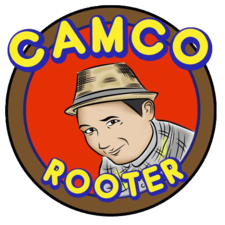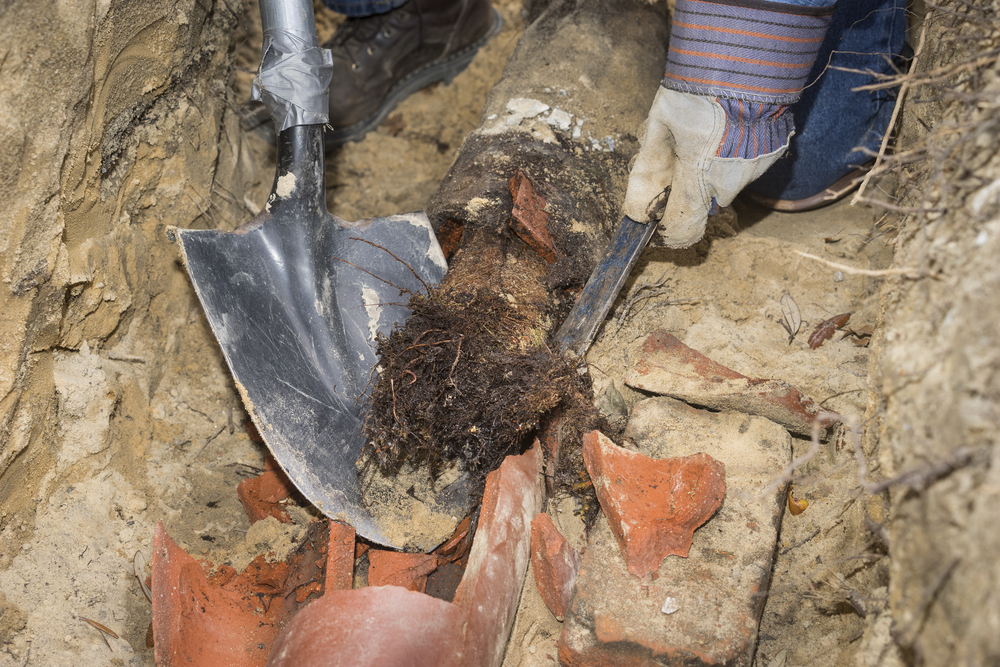The fastest way to identify a collapsed sewer line is to look for multiple slow drains, gurgling noises, sewage odors, soggy ground, and backups at the lowest fixtures. Fixing it typically requires trenchless pipe bursting, pipe lining if the structure allows, or full replacement when the pipe has completely failed.
Why This Problem Matters More Than You Think
A collapsed sewer line is one of the most expensive, disruptive, and hazardous plumbing failures. Unlike a minor clog, a collapsed sewer line blocks the entire sewer lateral, causes wastewater backups, and can even create sinkholes under your home.
This guide covers every sign, cause, repair option, cost factor, diagnostic method, and prevention tactic, including gaps your competitors don’t mention, such as mud in the sewer line, acceptance volume factors, underground soil movement, pipe material limitations, and what a collapsed drain actually looks like through structural symptoms.
What Does a Collapsed Drain Look Like?
You’ll never see the pipe directly, but the symptoms are unmistakable:
- The pipe has caved inward
- The structural wall is crushed or separated
- Soil fills the interior
- Water cannot pass the failure point
- Camera inspections show jagged edges or total blockage
This is very different from a simple blockage. A collapsed drain pipe can’t be cleared, it must be repaired or replaced.
Major Signs of a Collapsed Sewer Line
Below are the most reliable signs of a collapsed sewer line, backed by field data, camera inspection patterns, and professional diagnostics.
1. Multiple Slow Drains Across the Home
When more than one drain slows at the same time, the problem is downstream in the main sewer lateral, not a sink trap.
Why it matters:
Multiple slow drains are the earliest broken sewer line symptoms, especially when water rises in another fixture.
Quick Fix:
Stop all water usage immediately. Clearing upstream drains will not solve a collapsed sewer line.
2. Gurgling Toilets and Bubbling Drains
Gurgling means air is being forced back into fixtures instead of venting through the sewer line.
Common causes:
- Pipe crushed from soil movement
- Tree root infiltration
- Disjointed joints from old age
- Sewer line broken under house
These noises increase during showers or flushing, classic signs of broken sewer line failure.
3. Backups at the Lowest Level First
A busted sewer line always reveals itself through the lowest drain:
- Basement floor drain
- First-floor shower
- Utility sink
When the sewer line collapses, wastewater seeks the path of least resistance.
4. Sewer Odors Indoors or Outdoors
A functional sewer system is airtight except for the vent stack.
If you smell sewage, there is:
- A crack
- A collapsed section
- A disjointed fitting
- Pressure buildup or soil intrusion
Odors + slow drains = a strong indicator of sewer line damage.
5. Soggy Ground, Sinkholes, or Sunken Spots
Competitors mention yard pooling but rarely explain the soil mechanics:
A collapsed line allows wastewater to escape into the soil. Over time, this creates:
- Soil voids
- Ground shifting
- A sunken lawn
- Sinkholes
- Unstable soil supporting your slab
This is especially dangerous above a collapsed drain pipe under slab, where structural weight accelerates the failure.
6. Lush Grass or Rapid Plant Growth
Sewage is a fertilizer, so one patch of grass growing faster than the rest is a real red flag.
This correlates with mud in sewer line, where soil mixes with waste inside the pipe.
7. Rodents, Roaches, and Insects Appearing Suddenly
Sewer pests escape through cracks or collapse.
If extermination doesn’t solve it, check the sewer line, pests live in the exact pathways created by a broken sewer.
A Deep Root-Cause Look: Why Sewer Lines Collapse
Competitors mention the basics. Here is the complete system-level view, including missing structural and pressure-related entities.
Tree Root Intrusion
Roots enter through joints, expand, and crush pipe walls.
Aging and Deterioration of Material
Old clay, Orangeburg, or cast iron pipes lose structural integrity. Weak spots become collapse points.
Ground Shifting, Soil Movement & Load Pressure
- Settlement
- Heavy equipment
- Erosion
- Soil expansion
- Hydrostatic pressure
Rigid sewer pipes cannot flex, so they crack or collapse.
Improper Installation Artifacts
Missing bedding, incorrect slope, or poor joint alignment eventually leads to structural failure.
Internal Corrosion & Debris Accumulation
Grease, scale, debris, and corrosion weaken pipe walls over decades.
Symptoms vs. Likely Cause
| Symptom | Likely Cause |
|---|---|
| Multiple slow drains | Main line obstruction or collapse |
| Gurgling toilets | Air displacement from structural failure |
| Sewage odors | Cracked pipe or joint separation |
| Soggy yard | Soil infiltration at collapse point |
| Sinkholes | Complete structural failure |
| Pest activity | Pipe breach allowing entry |
| High water bills | Leak before complete collapse |
When a Simple Clog Becomes a Structural Collapse
Here’s the critical difference:
A clog shows:
- Localized drain issues
- No soil movement
- No odors outside
- No sinkholes
A collapse shows:
- Multi-drain failure
- Structural indicators
- Soil loss
- Odor + gurgling combo
If you’re unsure, a camera inspection confirms how do you know if your sewer line has collapsed in minutes.
How to Fix a Collapsed Sewer Line
The fix depends on the extent of damage, soil stability, and whether the pipe still has structural “host” integrity.
Camera Inspection (Mandatory First Step)
Professionals insert a sewer camera to evaluate:
- Pipe cracks
- Breaks
- Misalignment
- Soil intrusion
- Waterflow blockage
- The exact collapse location
If you need a Professional Plumber in your area, this step prevents unnecessary digging and saves thousands.
Repair Methods
Trenchless Pipe Lining (CIPP) – If the Pipe Is Not Fully Collapsed
Used when the interior is damaged but still structurally intact.
Benefits:
- No digging
- 50-year lifespan
- Seals cracks and corrosion
Not suitable if:
- The pipe is completely collapsed
- Soil has filled the void
Trenchless Pipe Bursting – Best Fix for a Fully Collapsed Sewer Line
A new HDPE pipe pulls through the old one while bursting the damaged pipe outward.
Why it’s preferred:
- No trenching
- Strong, long-lasting pipe
- Works even in severe collapses
This is the top solution for a sewer line broken under the house.
Traditional Excavation – Only When Required
Used when:
- Soil is unstable
- Large sections are missing
- A collapsed drain pipe under slab needs structural access
Though more disruptive, it ensures total replacement when trenchless isn’t possible.
Repair Method Comparison
| Method | Best For | Longevity | Digging Needed |
|---|---|---|---|
| Pipe Lining | Cracked but intact pipes | 50 years | Minimal |
| Pipe Bursting | Full collapse | 50+ years | Very minimal |
| Excavation | Severe soil loss | Varies | Extensive |
Quick Fixes Before Help Arrives
- Stop running all water immediately
- Turn off washing machines & dishwashers
- Avoid flushing toilets
- Move valuables away from low-level drains
- Document backups for insurance
Long-Term Prevention Tips
- Schedule camera inspections every 2–3 years
- Avoid planting trees over sewer laterals
- Never flush wipes, even “flushable” ones
- Limit grease disposal
- Repair small cracks before they worsen
When to Call a Pro Immediately Like Camco Rooter
- Backups at the lowest drain
- Yard pooling or unexplained wet spots
- Sudden influx of pests
- Extreme sewage odors
- Gurgling from multiple fixtures
Steps in the Full Repair Process
- Sewer camera inspection
- Locate the collapse
- Assess soil stability
- Choose trenchless or excavation
- Replace or reline the pipe
- Test and restore flow
When Costs Spike
Collapsed sewer line repair cost vary widely based on:
- Depth
- Soil type
- Access point availability
- Repair method chosen
When to Get a Second Opinion
If a plumber only suggests excavation without offering trenchless alternatives, get another estimate. Modern collapsed sewer line repair rarely requires digging an entire trench.
Restore Your Sewer Line Fast With the Help of Our Professionals
When you notice early signs, slow drains, odors, or soggy soil, respond quickly. Waiting turns a small issue into structural damage. Camco Rooter specializes in sewer line diagnostics, trenchless repair, bursting, and full replacements.
Call Camco Rooter today at (562) 373-4445 for fast, reliable service and long-lasting sewer solutions.
FAQ’s About Signs of a Collapsed Sewer Line and Fixing It
How do you tell if your sewer line needs to be replaced?
Multiple slow drains, soggy soil, gurgling fixtures, and backups at low drains typically mean replacement is needed.
How to tell if a drain pipe is broken underground?
Camera inspections reveal cracks, separations, soil intrusion, or full collapse.
Why would a sewer line collapse?
Tree roots, old materials, soil movement, corrosion, or heavy surface loads.
Does insurance cover a collapsed sewer line?
Some policies cover damage from sudden events. Aging pipes or corrosion are usually excluded.
How much does it cost to replace a sewer line?
Costs vary by length, depth, soil conditions, and whether trenchless technology is used.


